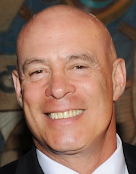Psychologist Jeffrey Mishlove ends his award winning paper, “Beyond the Brain: The Survival of Human Consciousness After Permanent Bodily Death," with these two conclusions. Footnotes in Mishlove's essay and videos he includeshave been removed in this presentation of his essay but are available and may be downloaded at https://bigelowinstitute.org/contest_winners3.php.
Terminal Lucidity
This well-documented phenomenon occurs among individuals who have Alzheimer’s disease or who are otherwise brain damaged. Bedridden patients can sometimes sit up, bright-eyed and alert. They can carry on conversations beyond their earlier abilities. Since a severely compromised brain cannot regenerate suddenly like this while a patient is on their deathbed, the most reasonable interpretation is that consciousness can function independently of the brain. One might even say the brain has deteriorated so much it can no longer act as a filter keeping the larger consciousness (or self or soul) from awareness.
Terminal lucidity usually occurs between two-weeks and shortly before death. Philosopher Stafford Betty describes a typical case of terminal lucidity in the video segment below. The dying person, who may even be in a vegetative state, can suddenly “erupt” into their old personality with full memory. It happens in 5-10% of Alzheimer’s cases.
My wife, Janelle Barlow, witnessed terminal lucidity with my mother who was suffering from both Alzheimer’s and a stroke. The episode lasted for about two hours and occurred within a week of her final passing. It included a heartfelt conversation about life, marriage, children, and the progress of my mother’s disease.
Postmortem survival is natural
Since 1972, when Uncle Harry came to me in a dream at the time of his death, I have spent my professional life exploring parapsychology and its implications for our understanding of postmortem survival and consciousness. Having a solid theoretical and practical knowledge of the field, I have over the decades been able to engage in persistent inquiries through the interview process – and have created video conversations with both experts and experiencers, going back thirty-five years.
Science has yet to show that consciousness is a product of neurological functioning. Alternative viewpoints have a lengthy history, going back more than a century. There is empirical support for the filtration theory of William James. We can also integrate postmortem survival into science by developing hypotheses entailing hyperspace mathematics. Pure logic favors metaphysical idealism as an explanatory model of reality, as Max Planck, quantum mechanics’ founder, explicitly said. From this perspective, consciousness survival is natural and expected.
The great Swiss psychiatrist Carl Gustav Jung addressed what he considers civilization’s primary ailment in his book, Modern Man in Search of a Soul.
“As a physician I am convinced that it is hygienic – if I may use the word – to discover in death a goal towards which one can strive; and that shrinking away from it is something unhealthy and abnormal which robs the second half of life of its purpose.”
We hide from our own deepest identity when we postulate that consciousness is extinguished with the death of the body – resulting in a severe gap in our capacity for self-knowledge.
Jeffrey Mishlove’s essay, “Beyond the Brain: The Survival of Human Consciousness After Permanent Bodily Death,” received first prize in the 2021 Bigelow Institute’s challenge to provide proof for the survival of human consciousness after death. Footnotes in Mishlove’s essay and videos he refers to have been removed in this presentation but are available in his essay, which may be downloaded at https://bigelowinstitute.org/contest_winners3.php. Mishlove is a licensed clinical psychologist, author, and host on YouTube of “New Thinking Allowed.”












